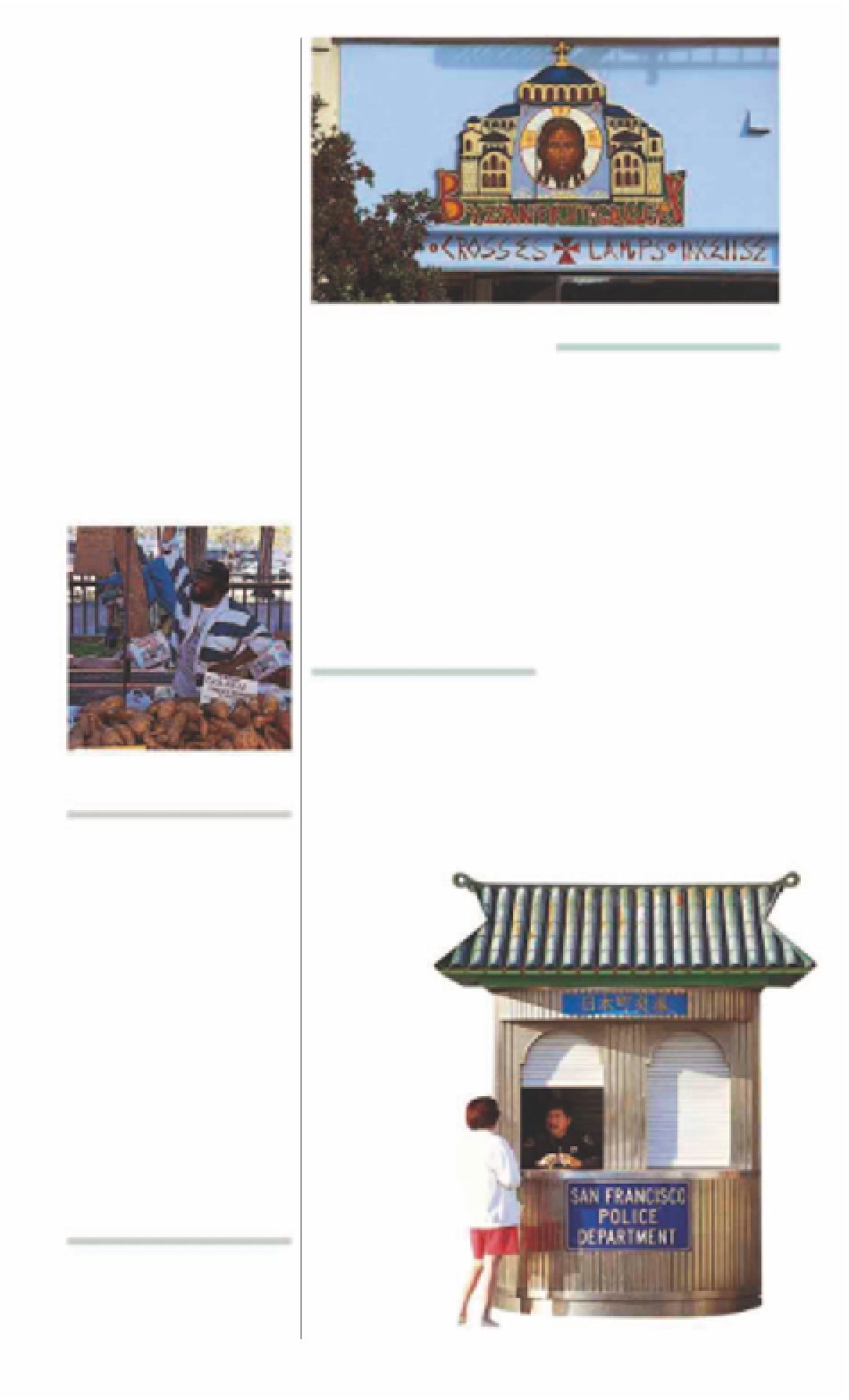Travel Reference
In-Depth Information
birthplace of Christopher
Columbus, after whom North
Beach's main avenue is named.
By the turn of the century, the
Sicilians had become the major
force in the area. In the 1940s,
Italians were the pre-dominant
foreign-born group in the city,
with some 60,000 living and
working in the lively North Beach
area alone.
Descendants of the families
who owned and operated the
fleet at Fisherman's Wharf set up
shops and small businesses here.
The businesses prospered after
World War II, and many families
moved to the suburbs in the
1950s and '60s. However they
often return to “Little Italy” to
patronize the excellent Italian
cafés and restaurants that still
flourish in the area.
Sign outside a Russian shop in the Richmond District
Hill is named after a party of
Siberian sailors thought to be
buried there. Russians
established a successful though
short-lived colony at Fort Ross
(see p191)
100 miles (160 km)
north of the city, and many still
live in San Francisco. Since 1921,
five editions a week of the
Russian Times
have been
published for the 25,000
Russians now concentrated in
the Richmond District around
the Orthodox Holy Virgin
Cathedral
(see p63)
.
The Melting Pot
Other cultures are also
represented in the city, but they
are not as distinctly defined.
Compared with New York or Los
Angeles, the Jewish community
in San Francisco is very small,
but Jews have still wielded
tremendous influence
throughout the city's history.
Far Eastern cultures have also
formed identifiable commu-
nities. Groups of Vietnamese
and Cambodians live in the
Tenderloin neighborhood, and
significant populations of
Koreans and Thais are scattered
throughout the city.
Indians and Pakistanis have
settled in the Bay Area of San
Francisco, particularly in
Berkeley and the “Silicon Valley”
computer industry heartland of
the South Bay.
The Japanese
Japanese businesses were active
during the 1980s property
boom, buying and building
many prestigious city center
offices and hotels. Generally,
however, the 15,000-strong
Japanese community in
San Francisco keeps
a low profile. The
exception is at the
Japan Center
(see p130)
, a
prominent
cultural and
shopping complex
on Geary Boulevard.
In the late 1930s, this
area extended over 40
blocks. During World
War II, the Japanese
along the US West
Coast were
relocated to
internment camps
in the nation's
interior. After the war,
they drifted back to
the area, but now
the community
occupies only
six blocks.
An Afro-Caribbean street stall selling
sweet potatoes and yams
The African-Americans
Although black people have
played an important role
throughout San Francisco's
history, the city's large African-
American community is a
relatively recent phenomenon.
In the 1930s, fewer than 5,000
blacks lived in San Francisco.
Thousands more came to work
in the factories and shipyards
during World War II, increasing
the black population tenfold.
Some settled in areas made
available by the relocation of
Japanese-Americans to
internment camps, others in
newer communities near the
shipyards in Hunters Point.
The Russians
The first trappers and fur traders
from Russia visited the bay
during the early 1800s. Russian
A police
koban
(booth) in Japantown

































